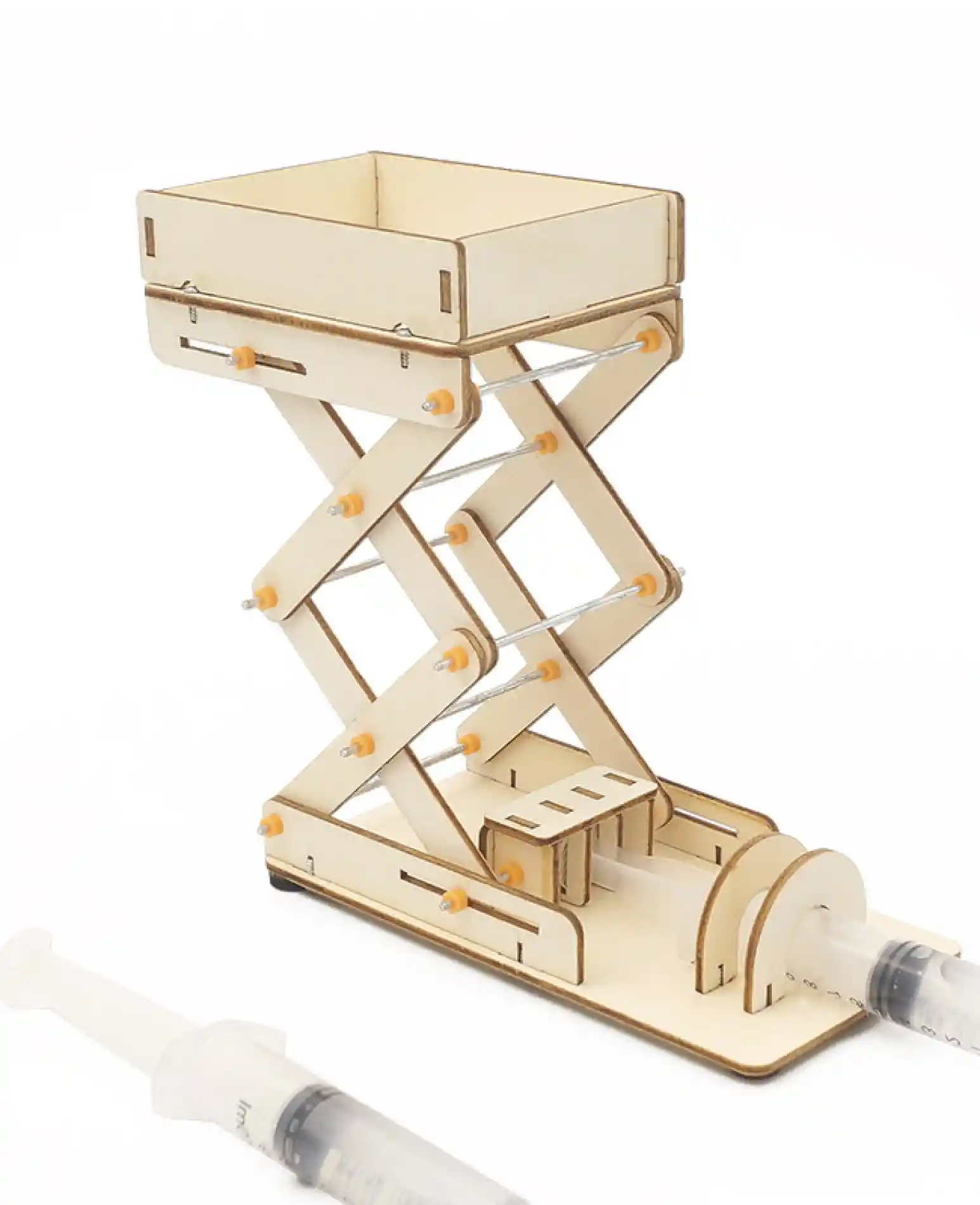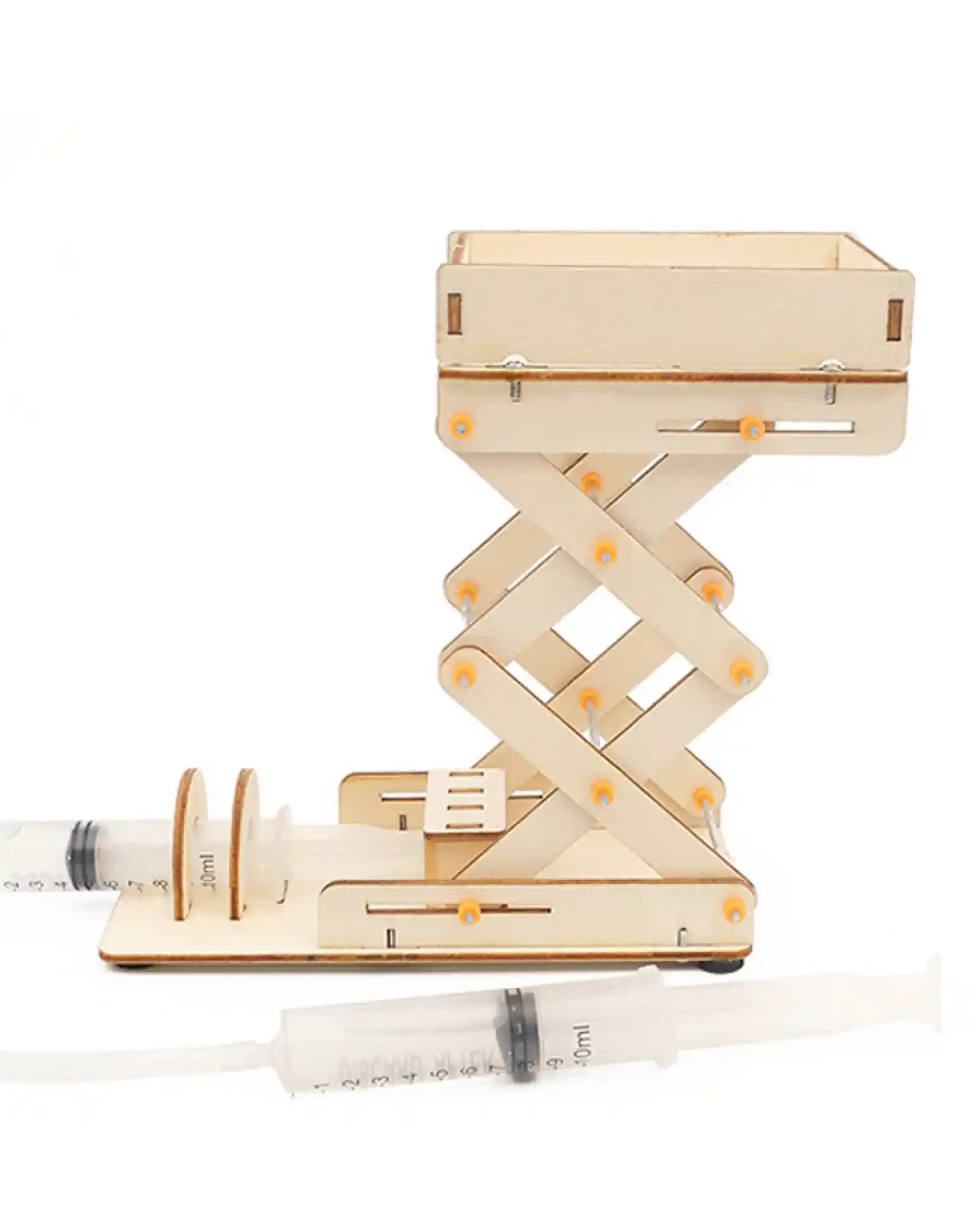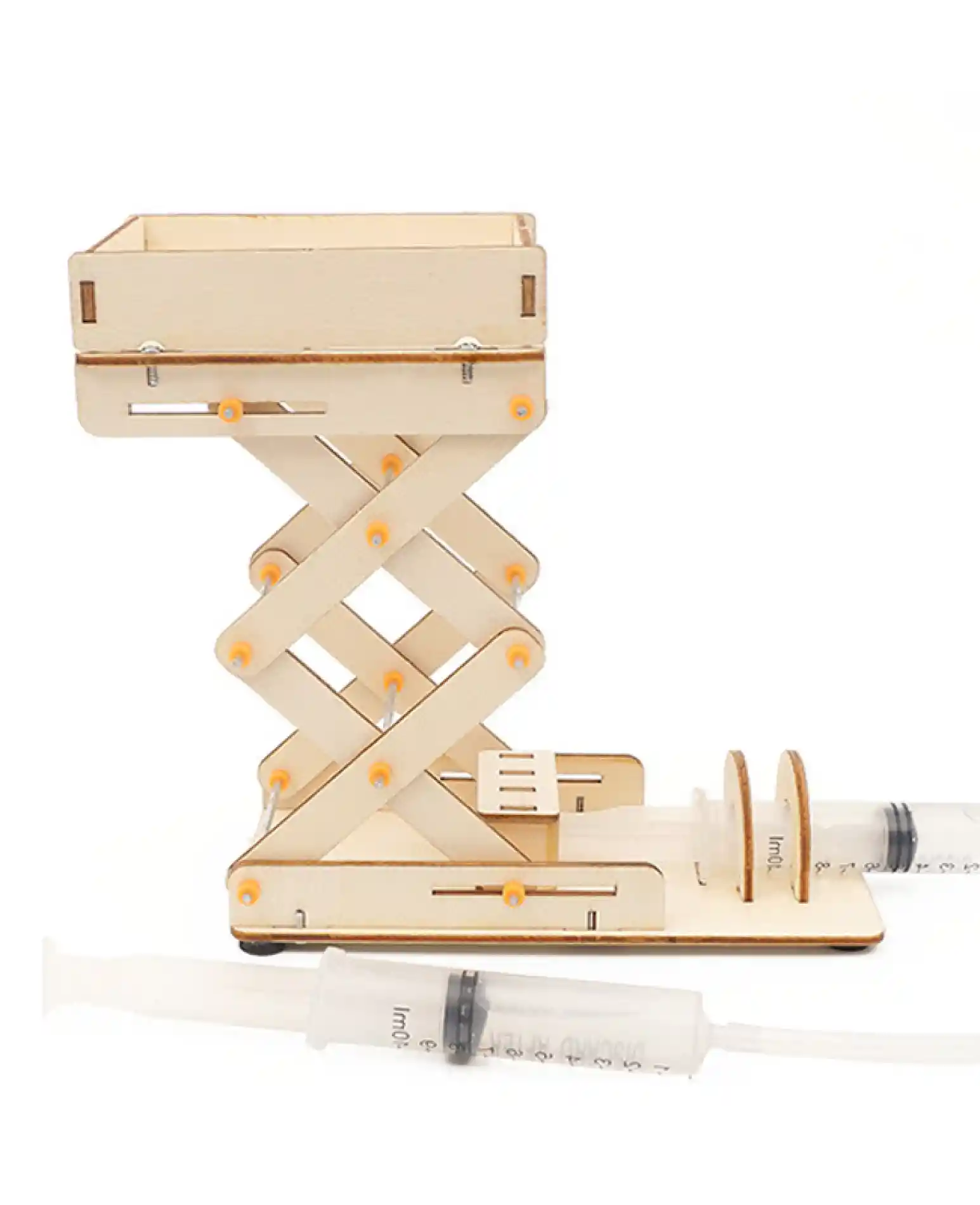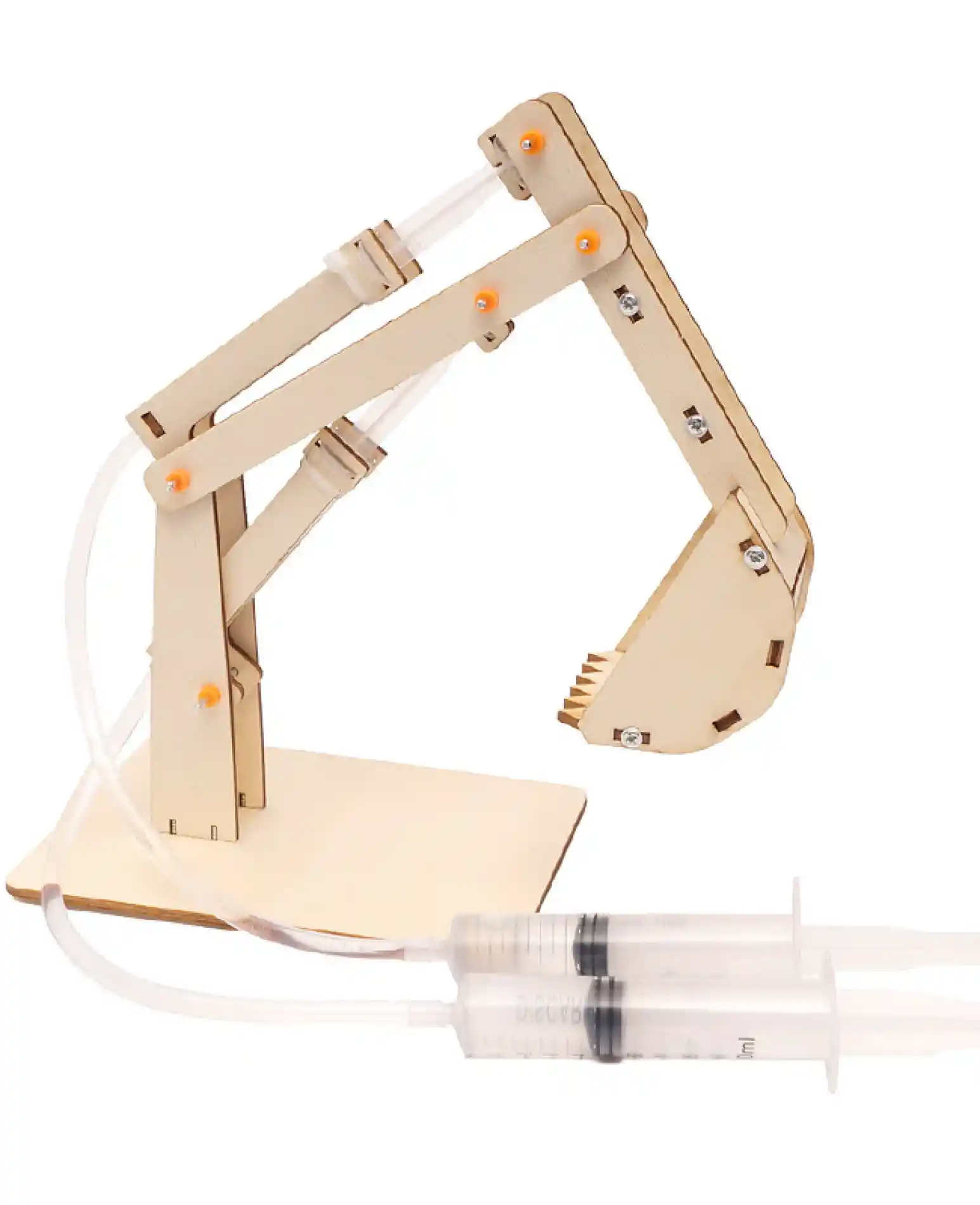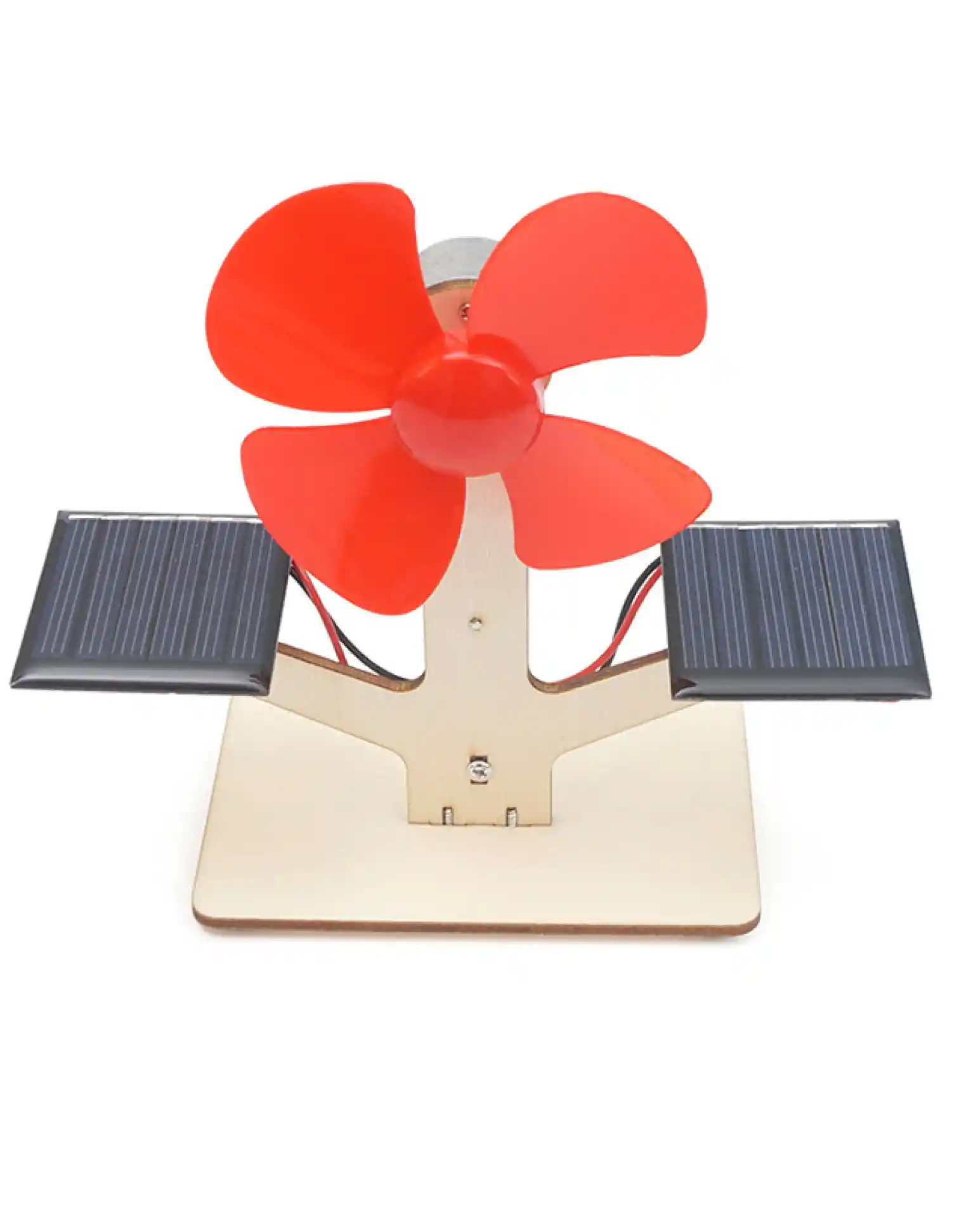Hydraulic lift: pressure, fluids, fun physics.
Hydraulic Lift
"Hydraulic Lift" Science Kit TXMR-098
A Learning Experience About Pressure and Fluid Power – How Does a Hydraulic Lifting Mechanism Work?
The "Hydraulic Lift" kit TXMR-098 allows children to learn about the principles of engineering and physics behind lifting mechanisms using hydraulic technology. With the kit, children can assemble a model of a hydraulic lift that generates force using fluids. They will discover how hydraulic mechanisms, which use fluid pressure, are used in various industrial and everyday applications. This is a spectacular and practical experiment that demonstrates the power of pressure and the forces of physics at work.
Features of the Hydraulic Lift Kit TXMR-098:
- Hydraulic lift model – a lifting system that can be operated using fluid pressure.
- Learning about hydraulic technology – how fluids and a piping system are used to apply lifting force.
- Self-assembly components – allow children to assemble the hydraulic system and learn about physics principles.
- Interactive learning experience – explanations of the effect of fluid pressure in a hydraulic mechanism, including fluid dynamics.
- A safe-to-use kit suitable for children of various ages.
How to Use the Hydraulic Lift Kit:
- Assemble the parts of the hydraulic lift system according to the detailed instructions.
- Connect the pipes and the hydraulic system, and introduce the designated fluid into the system.
- Use fluid pressure to lift the elevator and compare the forces applied in the system.
- Observe how fluid pressure affects the lift's movement and how the mechanism can be controlled.
- Learn about the principles of pressure, fluid dynamics, and engineering behind the hydraulic lift.
The "Hydraulic Lift" kit TXMR-098 is an excellent way to learn about the principles of pressure, fluids, and engineering in a practical and fun way. Children will enjoy understanding the technology behind lifting mechanisms, while conducting educational experiments and grasping physics principles.
Would you like a summary of this kit, or is there another science kit you'd like to translate?

